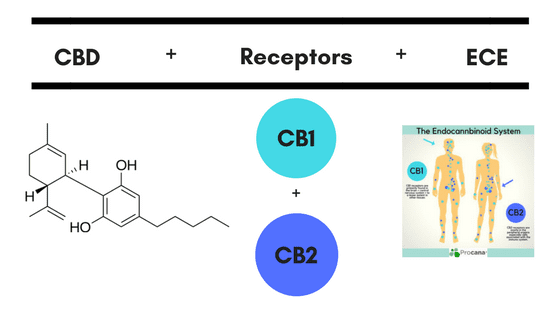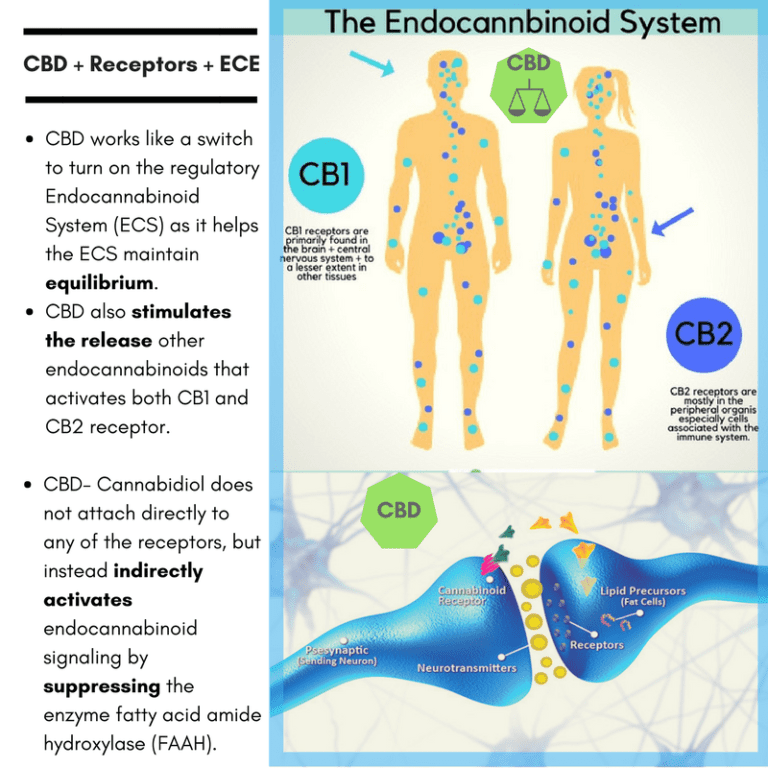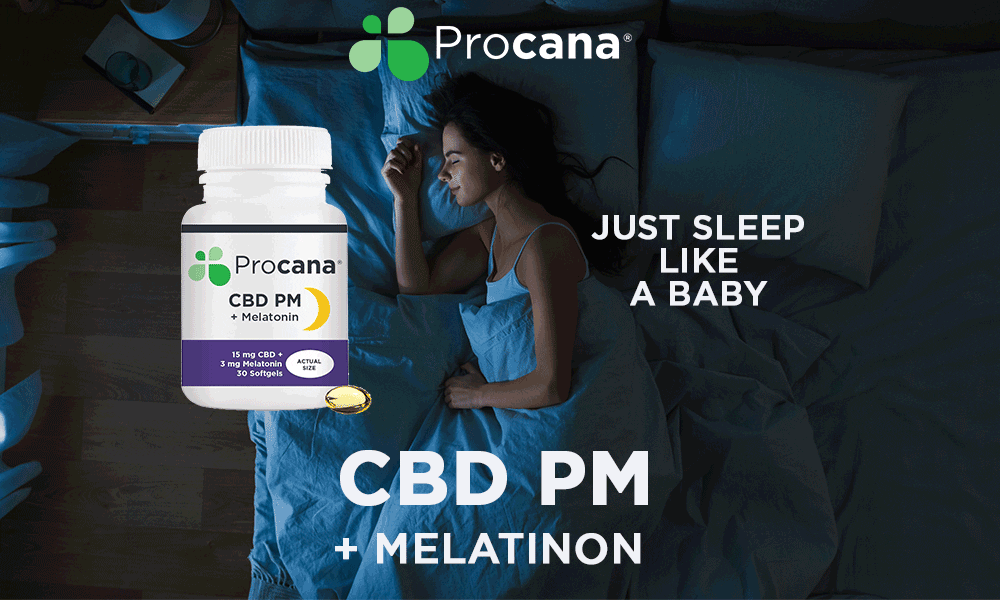The endocannabinoid system (ECS) includes cannabinoid receptors (protein molecules on the surface of a cell that respond to specific chemicals outside of the cell), the endocannabinoid (endo meaning made inside the body) compounds that interact with these receptors, and the enzymes that help produce and break down endocannabinoids. Researchers have identified two cannabinoid receptors – CB1 and CB2. The CB1 and CB2 receptors are activated by the two main endogenous cannabinoids – anandamide and 2-AG, which also function as neurotransmitters in the brain. These two endocannabinoids are mimicked by plant-derived phytocannabinoids – THC (an analog of anandamide), CBD (an analog of 2-AG), and dozens of other cannabinoids found in Hemp/cannabis plants.
How CBD Works with Endocannabinoid System?
- CBD works as a switch to turn on the regulatory Endocannabinoid System (ECS) as it helps the ECS maintain equilibrium.
- CBD prevents the breakdown of Endocannabinoids which is critical for neuromodulation and homeostasis.
- Unlike THC, Cannabidiol does not attach directly to any of the receptors, but instead indirectly activates endocannabinoid signaling by suppressing the enzyme fatty acid amide hydroxylase (FAAH).
- CBD also stimulates the release of other endocannabinoids that activate both CB1 and CB2 receptors.
- Reduces the uptake and breakdown of anandamide, which ultimately increases its levels. Anandamide’s proposed effects include regulation of appetite, anxiety, pain, pleasure, and reward.
CBD’s Interaction with Receptors:
- CBD has an indirect effect on the CB1 receptors by stopping the enzymatic breakdown of anandamide, allowing it to stay in the system longer and providing medical benefits.
- CBD helps to mediate the release of cytokines from the immune cells in a manner that helps to reduce inflammation and pain.
- CBD includes stimulation of vanilloid pain receptors (TRPV-1 receptor), which are known to mediate pain perception, inflammation, and body temperature.
- CBD at high concentrations, directly activates the 5-HT1A serotonin receptor, thereby conferring an antidepressant effect.
- CBD has been found to be an antagonist at the potentially new third cannabinoid receptor, GPR55, in the caudate nucleus and putamen, which if stimulated may contribute to osteoporosis.
When CBD is ingested, it enhances the endocannabinoid action because the ECS receptors are stimulated to produce their own cannabinoids. So when we take CBD, we are supplementing a naturally occurring cannabinoid system.
Sources:
- Eugene Scharf, MD, Department of Neurology, Mayo Clinic 2017 Oct 10.1089/can.2017.0033 Translating Endocannbinoid Biology into Clinical Practice: Cannabidiol for Stroke Prevention
- Role of Cannabinoid System in Pain Control & Therapeutic Implications for the Management of Acute & Chronic Pail Episodes
- Costa B et al. Vanilloid TRPV1 receptor mediates the antihyperalgesic effect of the nonpsychoactive cannabinoid, cannabidiol, in a rat model of acute inflammation. Br J Pharmacol. 2004 Sep;143(2):247-50.
- Zanelati TV et al. Antidepressant-like effects of cannabidiol in mice: possible involvement of 5-HT1A receptors. Br J Pharmacol. 2010 Jan;159(1):122-8
- Schuelert N and McDougall JJ. The abnormal cannabidiol analog O-1602 reduces nociception in a rat model of acute arthritis via the putative cannabinoid receptor GPR55. Neurosci Lett. 2011 Aug 1;500(1):72-6.





